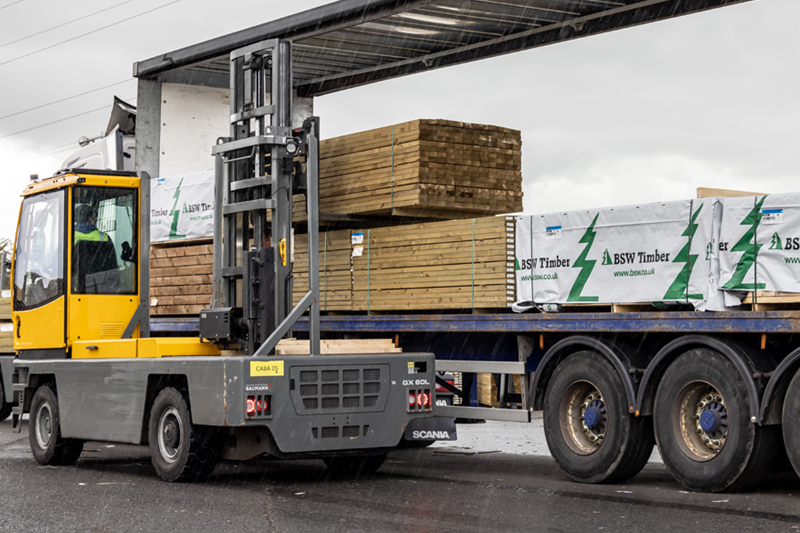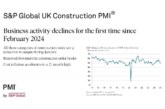
Where is demand for timber likely to go in 2022, and will supply finally start to match up? PBM spoke with Timber Development UK — the new name for the Timber Trade Federation following its merger with TRADA — to find out.
The jazz singer Sammy Davis Jr. had an early hit with ‘Something’s Gotta Give’ and whilst timber traders are never likely to make it into the Charts, both suppliers and customers in the merchant sector are starting to echo the sentiments in the song title. After two pandemic-driven years of exceptionally unusual market conditions, is the timber and wood products supply situation likely to change any time soon?
Timber Development UK’s recent market statement showed that timber imports were around 8% up on pre-pandemic 2019. Figures recently released showed that between January and July this year, import volumes in four individual months had exceeded the 1 million m3 mark — and the last time this happened was in the record year of 2007.
Timber is certainly arriving in the UK but the current port congestion, warehouse space shortage and lack of HGV drivers are hampering the ability to get wood products out to customers. Indeed, UK plc’s ability to recruit younger staff to fill vacancies is partly down to the age demographic — a study from the Centre for Ageing Better reveals over a third of Britain’s workforce are aged over 50, and thus less likely to take up demanding careers in haulage or construction.
However, if import volumes are gradually beginning to rectify themselves, how are experts viewing forward demand for 2022? October’s Housing Market Intelligence conference revealed that, though the economy may be slowing slightly in the face of labour shortages — felt particularly in construction and haulage — the general strength of demand is unlikely to diminish.
Similarly, industry analysts Glenigan believe private housing starts may grow by 11% in 2022, and be back at 2017 levels a year later. Housebuilders are reported to have strong forward order books and believe the pandemic is driving demand for new-build, out-of-town housing. This will in turn impact demand in 2022 for softwood-based timber products such as carcassing, roofing batten and sheet materials. T&G chipboard flooring is already reported to be in particularly short supply.
“While Timber Development UK foresees a possible correction in the markets at some point when demand and supply return to more normal balances, strong demand will keep up pressure over the short to medium term.”
So while Timber Development UK foresees a possible correction in the markets at some point when demand and supply return to more normal balances, strong demand will keep up pressure over the short to medium term.
In terms of hardwoods, to which merchants have increasingly been turning in the face of softwood shortages this year, European, North American and African hardwoods are all seeing increasing demand, though the supply of North American and now some African hardwoods is described by commentators as “difficult”.
Nick Boulton, Head of Technical and Trade at Timber Development UK, comments: “We have seen more temperate hardwoods arriving from the Baltic States and higher volumes of Oak coming from the USA, Canada, Italy, Poland and Spain but Oak imports are still below average. Europe and the USA are encountering the same logistics issues as Britain, and the high cost of container freight from other areas such as South East Asia are still causing problems.”
Reflecting on the many intertwining strands likely to contribute to 2022’s timber market conditions, Tony Hackney, CEO of BSW Timber — one of the country’s largest suppliers to the merchant sector — said: “It is incredibly difficult to forecast how the market will perform in 2022. There are many influencing factors that can dramatically affect both demand and supply situations very quickly. As we have seen in 2019/20, the timber market is truly a global one and the demand situation in other markets can have a significant impact on the UK situation almost overnight.
“In the UK, there is still a very strong housing market which will drive demand not only for construction grade material but also for fencing and landscaping products. With that in mind, underlying demand for 2022 seems positive. It is difficult to predict how the DIY/Retail sectors will perform next year, but the change in working practices which will see more people working from home could potentially further stimulate the already busy RMI market, as people seek to extend or renovate their homes to create additional homeworking spaces.”
Tony continued: “From our perspective, the acquisition of BSW by Binderholz is very exciting and will allow BSW to provide a wider basket of products to the merchants and gives access to engineered wood products that are increasing in demand, as the architectural community embraces the positive impact of building with timber in ever wider and more complex designs.”
In addition, demand for timber could further increase if the retrofit campaign currently being led by the Federation of Master Builders intensifies in 2022.
And as Sammy Davis Jr. once said: “You only have two choices: your commitment versus your fear.” However, timber suppliers and merchants are committed to maintaining high levels of customer service, whatever life may throw at us. And through working together co-operatively to navigate the pandemic and now the ongoing supply chain difficulties, Timber Development UK concludes by asserting “we’ve learned that we need have no fear over what lies ahead in 2022.”
Click here for more merchant-specific information from Timber Development UK.
A version of this article appeared in PBM’s December edition. Click here to read the full digital version of the issue.









